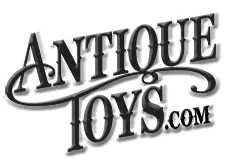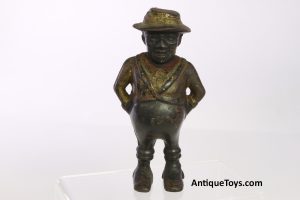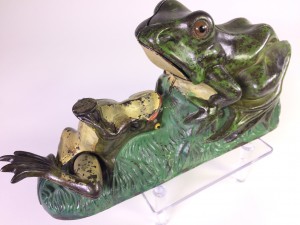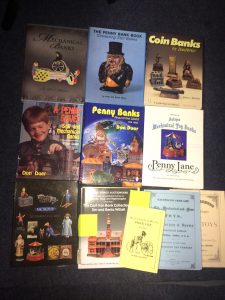Cast Iron Banks
Cast Iron Banks
Lately we have been beefing up our knowledge of the innumerable Cast Iron Banks out there. Many coin banks or cast iron banks can be broken into two large categories– Still Cast Iron Banks and then Mechanical Cast Iron Banks. Many toy collecting groups break down along these lines, as the moving parts tend to drive a sub-specialty of knowledge.
Still Cast Iron Banks:
A bank (as in the shape of an animal) with a slot for coins. Most of the time, this is literally a still item with no moving parts. Still Cast Iron Banks were normally pre-1930’s and offered an entry level price point.
Mechanical Cast Iron Banks:
A cast iron bank that uses a type of mechanical energy. Energy types for these banks include rubber bands, springs, and flywheels as well as gravity.
Both Still and Mechanical cast iron banks were originally intended to promote saving money among children in the mid-19th century. Frequently made of cast iron, mechanical banks were often creatively designed, depicting historical, legendary or everyday events to increase their appeal. Each bank performed a stunt or an action when a coin was dropped into a slot and a lever was pulled. The banks quickly became popular with children and adults alike and soon became a sought-after collector’s item.
Helpful Cast Iron Bank References:
The reference books that have been helpful include– the Schiffer Coin Banks by Bantbrico, Penny Banks Around the World by Don Duer, Penny Lane by Al Davidson, A Penny Saved Still and Mechanical Bank Guide by Don Duer, The Penny Bank Book by Andy and Susan Moore, and then The Official Price Guide to Mechanical Banks by my friend Dan Morpy. Let us note that there have been innumerable auction records and hard covered Cast Iron bank auction catalogs to acquire. Morphy’s, Sothby’s, Christies, Bertolia, RSL, and Noel Barret’s books have been invaluable.



